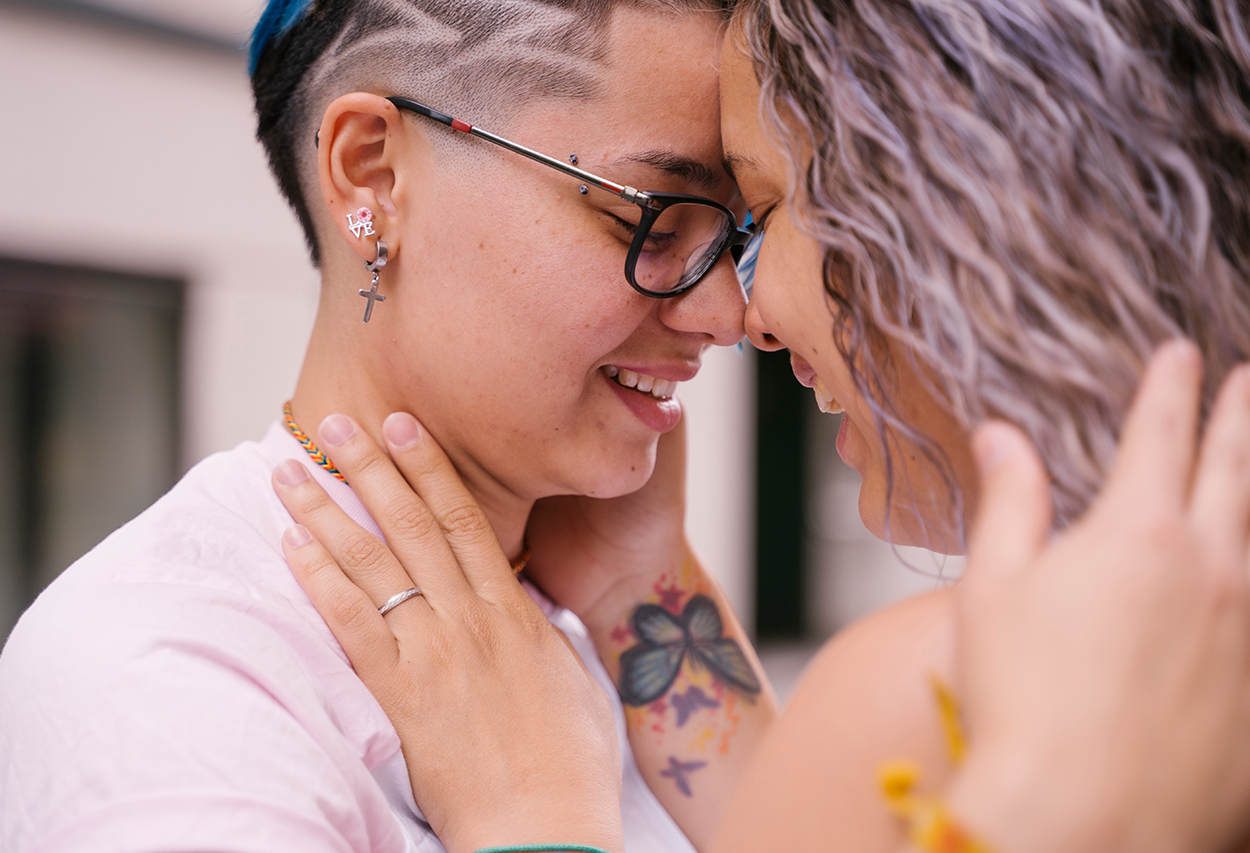As polyamory grows in popularity, more polyamorous people will seek therapy to assist them in managing their lives and relationships. But is modern therapy keeping up with our changing sexuality?
Sally Henderson* is a 40-year-old professional woman who identifies as monogamous but has been in a polyamorous relationship for three years. She saw a polyamory-experienced therapist with Greg*, her 47-year-old partner, at the beginning of their relationship. “I was trying to get my head around polyamory, and while I was trying to, we had a situation where boundaries were broken and I found that quite devastating. We had to figure out whether the relationship could continue.” In therapy, the couple decided they could maintain their relationship “but we had to figure out how we could do that without compromising our own identities.” Henderson thinks it was vital for the success of their therapy—and ultimately their relationship—that their therapist was educated in polyamory, and saw that Greg’s “identity” was a “legitimate” choice. “I don’t think we could have got this from anyone. We needed to know from the outset that that was the base where the therapist came from.” She urges other polyamorous people to see informed therapists. “Polyamory means that you have to really face your vulnerabilities. It’s quite a scary thing. The therapist that we saw really helped guide us through that process.”
Liz Scarfe, psychotherapist at Melbourne clinic, Cultivating Confidence, is a diversity-friendly therapist, experienced in therapy for polyamorous people. “There are many aspects of polyamory that are important for therapists to understand,” she said., “including the different kinds of reasons people come to polyamory, the values and beliefs that underpin it, the complexities of consent and boundaries, power dynamics, and the struggles people have with their other relationships—i.e. family—employment and social contexts.”
Bruce Alexander, founder of polyamorous dating app, Polyfinda, believes that polyamorous people could “strike it lucky” and get benefit from seeing a regular therapist, but they would see “better odds” if they saw a “poly-therapist”—someone who identifies as polyamorous, or has experience counselling those who do—as you would get someone “who is able to help you negotiate through the very complex world of polyamory.”
Finding experienced therapists is not always easy, however. In 2006, research found that there was very little education about polyamory in graduate psychology departments, and that “very few health professionals are truly equipped to work with poly clientele”. Further research in 2014 showed that that the majority of therapists—rather than supporting the polyamorous individual or relationship—advocate for the end of the non-monogamy. “The self-reports of polyamorous clients regarding therapeutic experiences,” writes the American Counseling Association, “raise concerns for the counseling field.”
What can happen when therapists do not understand polyamory and encounter a polyamorous client? “Most often the therapist will just lose the client quickly because they feel either judged or misunderstood,” said Scarfe. “Some clients might stay and can end up feeling shamed by the therapist. The worst thing of course, is that the therapist convinces the client to follow what they think the client should do in their life, instead of supporting the client to follow their own unique path.”Scarfe believes it is important that therapists understand that polyamory is “about diversity, not about disorder.” She continued, “Mainstream mental health has a tendency to label anything that is not mainstream as problematic or defective when in most cases, it’s just an example of human diversity. Polyamory is just the same, it’s about diversity, not about disorder.”
Uninformed therapists can interpret any relationship problemas coming solely from the practise of polyamory and fail to clearly see the actual issue the client is presenting with. The American Counseling Association tells it’s members that they may find that their “automatic responses and reactions” to see polyamory as “unhealthy” are based more on society’s adoption of “traditional family forms” than on a careful exploration of the client’s individual lifestyle, and warns that such mindsets can “blind the counselor.”
Relationships Australia, the national provider of relationship support services says, that they “support all individual choices in the types of relationships they engage in. This can be heterosexual, homosexual, open and polyamorous relationships.”
Scarfe urges other therapists to learn about polyamory. “Google is a great start. There are also a range of books and even some training programs .”Alexander agrees that therapists could benefit greatly from educating themselves on polyamory and polyamorous relationships. “There’s research and study,” he says, but states that he is not aware of any course or education program that exists that allows therapists to specialise in polyamory and prefers therapists who personally identify as polyamorous. “I don’t think anything would beat living the lifestyle.”
*subjects known to the writer but names changed for privacy.
Photo created by freepik – https://www.freepik.com/free-photos-vectors/people


